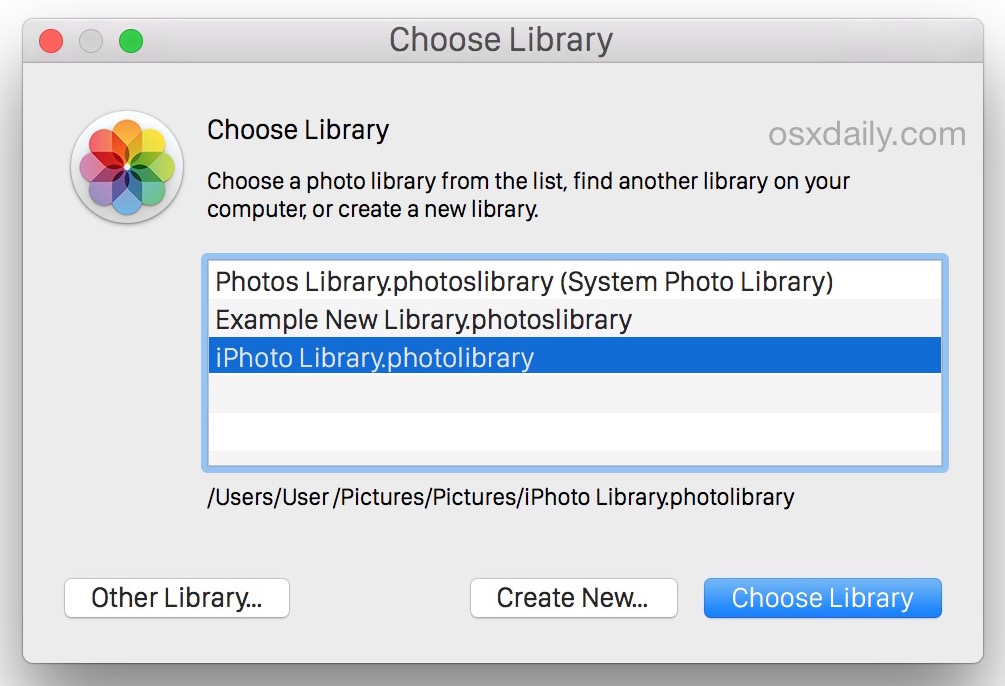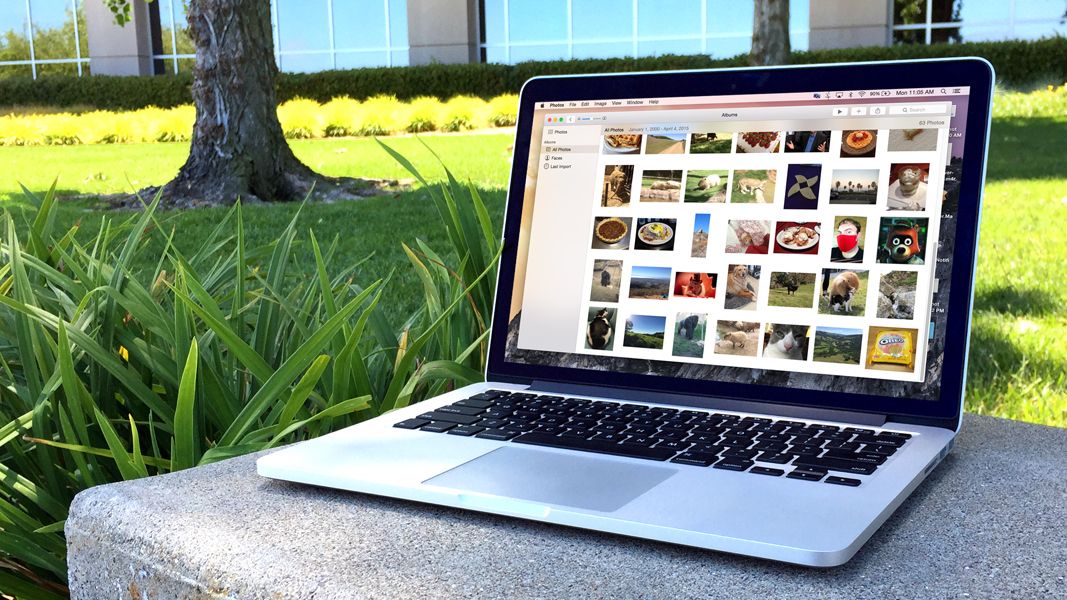- Jun 30, 2013 How to move your iPhoto library from one location to another. As you Mac's iPhoto Library grows in size you can move the library to an external hard drive.
- Nov 12, 2019 How to Back Up iCloud Photo Library to a Mac. Open the Photos app on your Mac. Click Photos in the menu bar and select Preferences from the drop-down menu. Choose the iCloud tab. Put a check in the box next to Download Originals to this Mac.
- Aug 16, 2019 Now you want to move iPhoto Library to a new location in internal drive of Mac computer (frankly, I don't know why, maybe you just want). Other cases include that you run out of hard drive space in Mac (Mountain Lion included) due to the high resolution photos taken by camera, or you just bought a new Mac computer (Mac OS X 10.11 included).
- Apr 17, 2019 Here are the detailed steps to find the location where iPhoto stores photos: Step 1 To begin the process, go to the “Finder” in your Mac computer and after that, navigate to your Home directory. Step 2 Thereafter, if you log-in to your Mac computer with the name “Alex”, the full path to the folder “iPhoto Library” would be Mac HD Users Alex Pictures iPhoto Library.
- With the upgrade to Photos, many Mac users have been left with a duplicate iPhoto library on their Macs. Here’s how to delete iPhoto library and clear out some clutter. IPhoto used to be the standard photo editor and photo management system on Macs, at least for the average computer user.
- Mac Os Iphoto Library Location Download
- Mac Iphoto Library Location
- Change Iphoto Library Location
- Mac Os Iphoto Library Location Near Me
How to find Photos' image files in the Finder. Peter Philpott wonders how to access his media files in Photos for OS X: “In iPhoto, I could right-click on a photo and get it to reveal the.
Photos in your System Photo Library are available in apps like iMovie, Pages, and Keynote. You can also sync them to iOS devices and view them on Apple TV. And if you want to use your own images as your desktop picture or screen saver, the images need to be in your System Photo Library before you can select them in System Preferences.
If you have only one photo library, then it's the System Photo Library. Otherwise, the first photo library that you create or open in Photos will become the System Photo Library. If you have more than one library, you might need to designate a System Photo Library, so other apps can access the photos and videos you want them to use.
Follow these steps to designate a System Photo Library:

- Quit Photos.
- Hold down the Option key and open Photos. One of the photo libraries is already designated as YourLibraryName (System Photo Library).
- Choose the library you want to designate as the System Photo Library.
- After Photos opens the library, choose Photos > Preferences from the menu bar.
- Click the General tab.
- Click the Use as System Photo Library button.
If you open a second or different library in the Photos app, and you haven't designated it as the System Photo Library, other applications will use photos from the original System Photo Library. Hold down the Option key when you open Photos to see which library is set as the System Photo Library.
iCloud and the System Photo Library

You can use iCloud Photos, Shared Albums, and My Photo Stream only with the System Photo Library. If you choose a different library in Photos without designating it as the System Photo Library, the iCloud tab in Photos preferences is disabled:
Mac Os Iphoto Library Location Download
If you designate a new library as the System Photo Library and then turn on iCloud Photos, the photos and videos in the new library will merge with those already in your iCloud Photos. If you want to keep the contents of your photo libraries separate, don’t turn on iCloud Photos for more than one library in Photos.
If you want your Mac's photos to wirelessly sync to all your other iOS devices and computers, you want to set up iCloud Photo Library: Apple's photo sync service lets you back up your images on all your devices, as well as access them — online or offline — on said devices. If you're willing to pay for the extra iCloud storage space, you can store an incredible amount of photos and videos, all accessible at the touch of a button or multi-touch screen.
Here's how to set it up on your Mac and get everything configured to your liking!
How to set up iCloud Photo Library on your Mac
- Launch the Photos app on your Mac.
- Select the Photos menu in the upper left corner of your screen.
- Go to Preferences.
Click on the iCloud tab.
Source: iMore
How to update python libraries on mac terminal. The ReadMe in the disk image that contains the installer says running the installer should also 'put the underlying machinery into the folder /Library/Frameworks/Python.framework'. What I have instead is a folder called Python 3.3 which does contain (aside from the documentation and a command to update shell profile) IDLE and PythonLauncher, but no Build Applet tool; I typed 'python' into my Terminal window to see if 3.3.2 was installed, but it said Python 2.6.1 even after restarting my computer.
Check 'iCloud Photos.' This will begin uploading any and all images you have stored in the Photos app to iCloud.
Source: iMore
How to optimize your photo and video storage
If you routinely shoot 4K video or high-quality images on your iPhone, iPad, or DSLR, you may run out of storage space fast. (I have a 1TB iMac, but also have almost a terabyte of 4K video stored in iCloud — it gets unwieldy, fast!) This is especially true if you have a Mac laptop with limited hard drive space: It's nice to look at your iPhone's gorgeous Portrait mode photos, but not necessarily always practical to store all of them locally.
Thankfully, Apple offers an Optimize Storage option, which lets you store full-resolution photos and videos of only your most recently shot and accessed imagery; all older photos and videos are available to download via iCloud and are stored as low-resolution previews on your device to save space. You can switch between optimizing your Mac's photos storage or storing your full library locally: Here's how!
Note: If you plan on using Optimize Storage, we suggest having at least one device that stores your entire library locally (usually a Mac with a large local or external hard drive), so you have multiple backups of your photographs and video.
- Launch the Photos app on your Mac.
- Click Photos in the App menu in the upper left corner of your screen.
Select Preferences from the drop-down menu.
Source: iMore
- Click the iCloud tab.
Click Optimize Mac Storage.
Source: iMore
Full-resolution versions of your photos and videos will be uploaded to iCloud.
How to share photos with iCloud Photo Library
Apple's photo service doesn't just provide online backups and sync for your images and video: The company also offers a free sharing service that allows you to send shared albums to friends and family (or create a publicly-shared website). Here's how to turn it on for your Mac.
Mac Iphoto Library Location
Questions?
Let us know in the comments below.
Change Iphoto Library Location
Updated January 2020: Updated for macOS Catalina. Serenity Caldwell worked on a previous version of this post
iCloud Photo Library: The Ultimate Guide
Main
For all your USB-C needsMac Os Iphoto Library Location Near Me
The HybridDrive is a USB-C dock with an SSD built in
You need more ports, right? And you probably need more storage, right? What you really need is the HybridDrive.